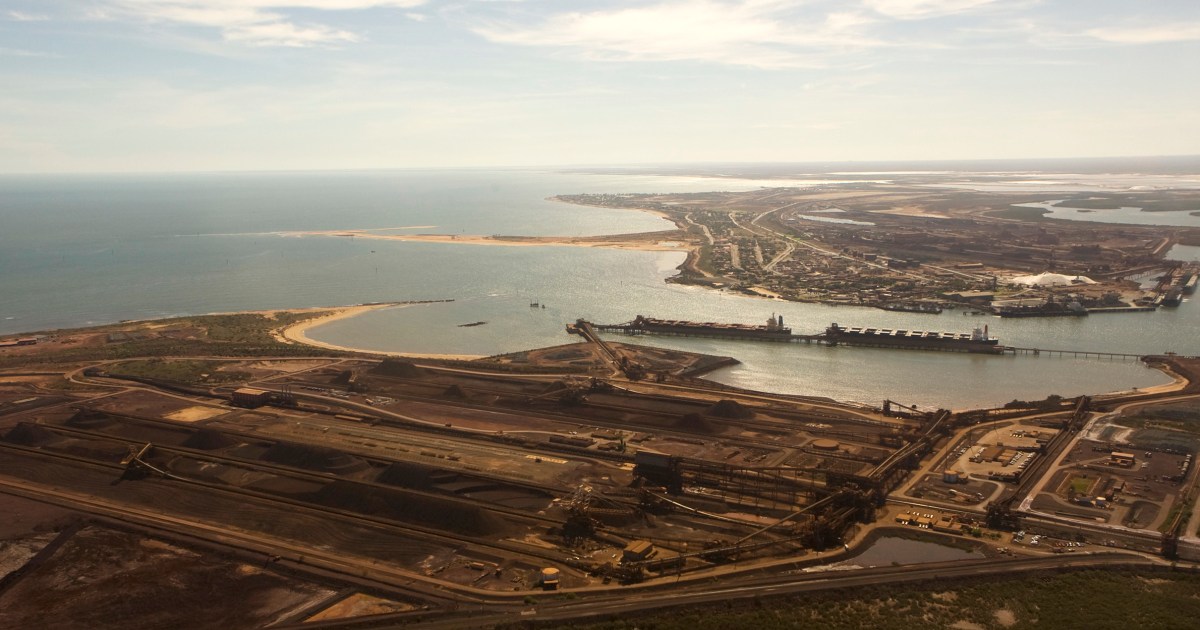Australia on Edge: The Approach of a Category 5 Cyclone Promises Devastation
As Australia braces itself for the imminent landfall of a Category 5 cyclone, communities across the affected regions are preparing for a potential onslaught of “very destructive winds” and torrential rain. This storm, which meteorologists have classified as one of the most powerful to approach the continent in decades, is expected to wreak havoc across multiple states, prompting emergency services to declare a state of high alert.
Understanding the Threat of a Category 5 Cyclone
Category 5 cyclones are the most severe storms on the Australian tropical cyclone scale, characterized by wind speeds exceeding 252 kilometers per hour (156 miles per hour). Such winds can result in catastrophic damage, with the potential to destroy homes, uproot trees, and severely disrupt infrastructure. The psychological impact on communities can be just as devastating, with residents facing the stress and uncertainty that such natural disasters bring.
What to Expect from a Category 5 Cyclone
The approach of a Category 5 cyclone like the one currently threatening Australia is marked by several key characteristics:
- Intense Wind Speeds: Wind gusts can exceed 300 km/h, causing widespread damage.
- Heavy Rainfall: Cyclones can bring excessive rainfall, leading to flash flooding and landslides.
- Storm Surges: Coastal areas may face severe storm surges, exacerbating flooding risks.
- High Tides: Combined with storm surges, high tides can lead to significant coastal erosion and property damage.
These factors make it crucial for residents in the path of the cyclone to take precautions and remain informed about the storm’s trajectory.
Emergency Preparedness: Community Response
In light of the impending cyclone, local authorities across Queensland and New South Wales have been proactive in disseminating information to residents. The state emergency services emphasize the importance of preparedness, urging individuals and families to take the following steps:
- Create an Emergency Kit: Essential supplies including food, water, medications, and flashlights should be readily available.
- Secure Your Property: Residents are advised to board up windows, secure outdoor furniture, and check for any loose items that could become projectiles.
- Stay Informed: Regular updates from the Bureau of Meteorology and local news outlets are vital for understanding the storm’s progression.
- Evacuation Plans: Families should have a clear evacuation plan and know their nearest shelters in case of emergency.
Local governments are also providing resources and assistance to ensure that vulnerable populations, such as the elderly and those with disabilities, have necessary support in place.
The Role of Technology in Cyclone Tracking
Advancements in meteorological technology have significantly improved the accuracy of cyclone tracking and forecasting. High-resolution satellite imagery, Doppler radar, and computer modeling help scientists predict the path and intensity of storms with greater precision. This data allows for timely warnings and enables emergency services to mobilize resources effectively.
For instance, the integration of real-time data into emergency response plans ensures that communities can react swiftly to changing conditions. Mobile apps and social media platforms also play a crucial role in disseminating information, enabling residents to stay connected and informed about the storm’s status.
Historical Context: Australia’s Cyclone Experiences
Australia has a long history of cyclones, with some of the most notable storms leaving lasting impacts on communities. For example:
- Cyclone Tracy (1974): One of the deadliest cyclones in Australian history, Tracy devastated Darwin, resulting in significant loss of life and property.
- Cyclone Yasi (2011): This cyclone caused extensive damage in Queensland, particularly to the banana and sugarcane industries.
- Cyclone Debbie (2017): A Category 4 cyclone that led to widespread flooding and destruction across Queensland and New South Wales.
These events serve as stark reminders of the potential devastation that cyclones can bring, reinforcing the need for preparedness and resilience in the face of natural disasters.
Community Resilience and Recovery
While the threat of a Category 5 cyclone poses significant challenges, Australian communities are known for their resilience. In the aftermath of previous cyclones, local residents have banded together to support one another, showcasing the strength and solidarity that often emerges during crises. Recovery efforts typically include:
- Community Support Programs: Initiatives that provide food, shelter, and resources for those affected by the storm.
- Government Assistance: Financial aid and recovery grants from both state and federal governments to help rebuild homes and infrastructure.
- Long-Term Planning: Enhanced infrastructure planning and development to mitigate the impacts of future cyclones.
The proactive steps taken by communities and authorities alike demonstrate a commitment to not only surviving but thriving in the face of adversity.
Conclusion: Hope Amidst the Storm
As Australia stands on the brink of experiencing a Category 5 cyclone, the focus remains on safety, preparedness, and community support. While the threat is significant, the spirit of Australian resilience shines through, reminding us that even in the face of nature’s fury, there is hope and strength in unity. By taking proactive measures and supporting one another, communities can navigate these challenging times and emerge stronger on the other side.
Residents are encouraged to heed warnings, stay informed, and prioritize safety as they brace for the storm. The lessons learned from past cyclones and the advancements in technology serve as a beacon of hope, illuminating the path toward resilience and recovery.
See more Your Daily Weather



